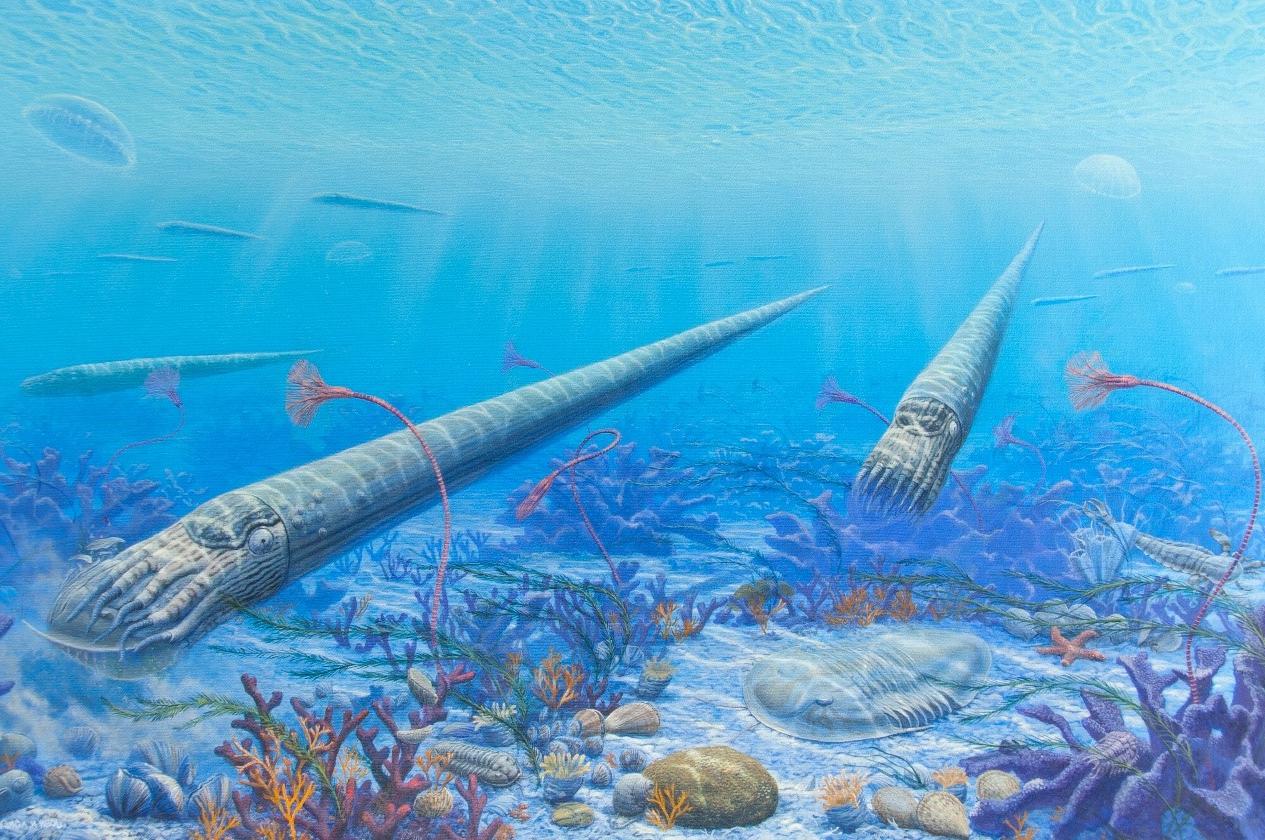
CMC的博客
辛辛那提拱门
作者:卡梅隆·施瓦尔巴赫
Cincinnati and the surrounding region are known around the world for their abundant and well-preserved Ordovician-age fossils. The rocks beneath the city and its surrounding area preserve evidence of an ancient marine ecosystem that once inhabited this region nearly 450 million years ago. 近网上赌搏网站十大排行来, paleontologists have used these fossils and the rocks in which they are preserved as a unique natural laboratory to examine important aspects of Earth’s history such as evolution, 生物入侵, 气候变化, 海平面波动, and plate tectonics during the Ordovician Period. So how is it that fossils from an ocean that was around nearly half-a-billion years ago can be found in the middle of the North American continent? The answer lies in the formation of the Cincinnati Arch.
Discovered by John Locke during his work with the First Geological Survey of Ohio in 1839, the Cincinnati Arch is a large geologic feature serendipitously centered on the city of Cincinnati. It is a broad structural uplift with the Illinois Basin to the west, the Michigan Basin to the northwest, and the Appalachian Basin to the east and southeast (图1).

图1. Map showing regional tectonic features surrounding the Cincinnati Arch. Image taken from Bedrock Geology of Marion County by 南希 R. 哈森布勒和沃尔特. Hasenmueller (igws.印第安纳州.edu).
Features such as this form inland during mountain building events called orogenies, wherein enormous regions of rock are thrust together through the tectonic movements of crustal plates, 堆积, and subsequently bent and folded as they are put under great pressure. As a mountain belt forms (in this case, the Taconic Mountains to the east), its immense weight pushes down the Earth’s crust beneath it, 形成一个盆地(图2). On the other side of this basin, the crust is bent upwards forming the opposite of a basin – an arch. 在米莱尼亚, the top of this arch is eroded away by rivers and glaciers, leaving the oldest rocks exposed at the center of the arch and the youngest rocks on the flanks (图3). In the case of the Cincinnati Arch, the oldest exposed rocks date from the Ordovician Period and the youngest from the Permian Period.

图2. Image showing the formation of the Taconic Mountain belt and the accompanying inland basin on the North American continent. The periphery of the Cincinnati Arch uplift can be seen on the left edge of the image. 图片由J. Houghton first published in The Teacher-Friendly Guide to the Geology of the Northeastern U.S. by Jane Ansley (published by the Paleontological Research Institution).

图3. Northwest to southeast transect across the state of Ohio showing subterranean bedrock. Note the shape of the Cincinnati Arch in cross-section. Ordovician rocks are shown in light and dark pink, with older rocks above and younger rocks below. Image taken from Ohio Division of Geological Survey, 2006, Bedrock geologic map of Ohio: Ohio Department of Natural 资源, Division of Geological Survey Map BG-1, generalized page-size version with text, 2 p.,比例1:20 000.
So that explains how the Cincinnati Arch was formed, but why are there fossils from an ocean in Cincinnati? To answer this, we must go back to when the Arch was first beginning to form. When the sediments that formed the Ordovician rocks beneath Cincinnati were deposited, the region was beneath a shallow subtropical sea in the southern hemisphere (图4). This shallow marine ecosystem had environments that ranged from peritidal (around the shoreline) to deep offshore (about 150 feet deep), each with a unique composition of sediments and population of organisms. The Cincinnati area was subjected to frequent hurricanes that brought in muddy sediments shed from the building of the Taconic Mountains and interfingered them with carbonates produced by local organisms. The organisms living on or near the seafloor during these events were buried by the sediments, 如果条件合适的话, 然后变成了化石. The resulting layers of fossiliferous mudstone and limestone can be seen in roadcuts and creek outcrops throughout the region today. Stay tuned to learn more about the geology and paleontology of the Cincinnati region.

图4. 辛辛纳提阶的, oil on canvas, by John Agnew, 2007. This scene depicts life in the Cincinnati region as it may have appeared during the Ordovician Period, approximately 445 million years ago. Taxa depicted include medusa cnidarians, 软体动物头足类动物, 广翅鲎, 海百合, 殖民珊瑚, 三叶虫, 苔藓虫, 腕足类, 有皱纹的珊瑚, 双壳类, 腹足类, edrioasteroids, conularids, 和藻类.
博物馆小时
星期四至星期一开放
10 a.m. 到5点.m.
星期二及星期三休息
关闭 Thanksgiving Day and Christmas Day
仅限会员提前入场: 星期六早上9点.m.
客户服务时间:
周一至周日,上午9点.m. 到5点.m.

